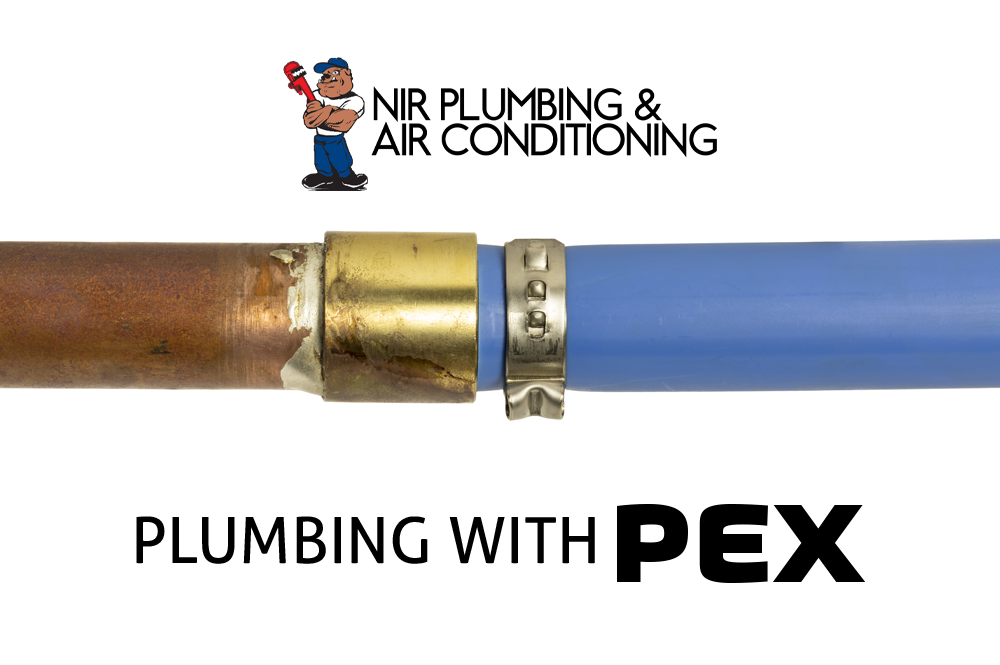[vc_row][vc_column width=”1/1″][vc_column_text]
Bet you didn’t think plumbing pipes could be so pretty, huh? These are some unique ways people have used plumbing pipes as decoration
Whether you have exposed pipes or simply prefer an industrial aesthetic for your space, plumbing pipes can create an interesting decor element. So how can you make your pipes stand out in unique ways?
We’ve even shared how people have DIY’d creative plumbing pipe uses in different spaces before. But the thing to remember is that some of these uses entailed having to disguise or conceal exposed piping. Now we want to showcase the pipes, not hide them.[/vc_column_text][vc_column_text]
What is an “Industrial” Aesthetic?:
This interior design trend takes inspiration from old factories and industrial spaces that have since been converted to lofts and other living spaces. Emphasis is placed on the raw, rustic appeal of warehouse spaces — and industrial aesthetic is really the only aesthetic in which exposed appliances really do look good.
In many older homes or big cities, most of the structures are permanent and made of brick with a lot of piping and air conditioning ducts added on the exterior walls. Some people aren’t fond of that look, but this is for those who are. And there are plenty of creative techniques that could be done to make the pipes stand out. Here are 7 unique ways people have used plumbing pipes to enhance their space.[/vc_column_text][vc_column_text]
1. ROLLING CLOSET DOOR HARDWARE:
On this interior design blog, Jenna says: “The popularity of rolling doors continues and even though I’m not in favor of following every trend, adding a door of this style was the only solution for our master closet. The door to the closet was removed a few years back when revamping the space to maximize on shelf area. Since then there’s been no door.”
The solution? A rolling door with DIY hardware using plumbing pipe. Though she calls this project challenging, the reward is well worth it.
SUPPLIES:
- (2) Flanges
- (2) 3/4″ x 1″ Black Steel Nipple Fitting
- (2) 3/4″ Elbow
- (1) 3/4″ Black Iron Pipe (can be cut to size)
- (2) 3/4″ Black Iron Tee
- (2) 3/4″ x 1/2″ Black Steel Nipple Fitting
- (2) Casters
- (2) Black Iron Reducing Coupling
- Screws + Anchors (if there are no studs)
- Drill
- Door
- Handle – (2) flanges; (2) elbows; (1) 12″ L x 1/2″ W pipe
TIPS: The purpose of DIYing this door rather than purchasing true rolling door hardware is that the DIY track is a whole lot less expensive than the latter. It’s recommended that this DIY shouldn’t be used in high-traffic areas that need privacy. The DIY door is ideal for areas where it’s left open most of the time.
Visit Jenna Burger’s blog for more interior design inspiration![/vc_column_text][vc_column_text]
2. CURVED SHOWER CURTAIN ROD:
This blogger moved in to their home that was a completely blank slate. But there’s one thing they knew for certain: They wanted to extend the oil rubbed bronze and Edison theme further into our home.
“There are plenty of curtain rods, toilet paper holders, and shower curtain rods out there on the market to choose from that would match the small amount of existing décor, but neither of us was willing to fork over $20-$40 per fixture to make this happen. After all, we had 4 windows that needed immediate covering, needed 3 toilet paper holders, one towel holder, and two shower curtain rods.”
The solution? Adding industrial finishes to our bathrooms by building creative shower curtain rods, toilet paper holders, and hand towel holders through the use of black iron pipe. For this DIY, we’ll be focusing on the curved shower curtain rod.
SUPPLIES:
(Shower Curtain Rod)
- (2) 3/4″ Black Iron Floor Flanges*
- (1) – 3/4″ 90-Degree Black Iron Elbow*
- (1) – 2-1/2″ x 3/4″ Welded Steel Nipple*
- (1) – 50″ x 3/4″ Black Iron Pipe (Lowe’s)
TIPS: It’s recommended to assemble the components prior to installing any piece of hardware. There’s no need to crank the fittings super tight – simply hand tightening them will be sufficient. And to complete the industrial look, they used bronze/black square head screws to mount.
Check out the rest of Craft Thyme’s industrial DIY projects here.[/vc_column_text][vc_column_text]
3. INDUSTRIAL PIPE STOOL:
This blogger was excited to jump on the industrial pipe project bandwagon, but needed a smaller project to tackle (we admit these first couple of projects were a bit intense).
“I don’t have room in my office for a lot of the larger projects I’ve seen like shelving units or tables, but I found a way to add a bit of that cool industrial look in a smaller size,” wrote the blogger. But she still wanted something to add to her office makeover to-do list.
The solution? 4 DIY Industrial Pipe Stools for my work table using plumbing pipe and wood rounds. This design flares out at the bottom, adding extra stability and support for the stools. They stand about 21-22″ tall and about 11 1/2 – 12″ wide at the bottom (sizes will vary depending on how tight pipes are fitted).
SUPPLIES:
- (1) 12″ round wood seat (found near the lumber section in hardware stores)
- (4) 1/2″ floor flanges
- (4) 1/2″ x 12″ pipes
- (4) 1/2″ x 3″ pipes
- (5) 1/2″ x 4″ pipes
- (6) 1/2″ tees
- (8) 1/2″ 90° elbows
- (8) 1/2″ close nipples
- (4) 1/2″ caps
- Elmer’s ProBond Advanced
TIPS: It’s a good idea to price out the pipes you need at a few different hardware stores before buying; black steel pipes are generally less expensive, so that’s something to keep in mind when making your decision. It’s also highly recommended to remove any price stickers from your pipes before you start building.
We recommend waiting to tighten the caps on the bottom of the legs right away. You can loosen or tighten them at the end to help level the stool, if necessary. And while these stools technically don’t require any tools to build them, having a pair of vice grips are helpful.
Follow Love Grows Wild for more home projects![/vc_column_text][/vc_column][/vc_row]


